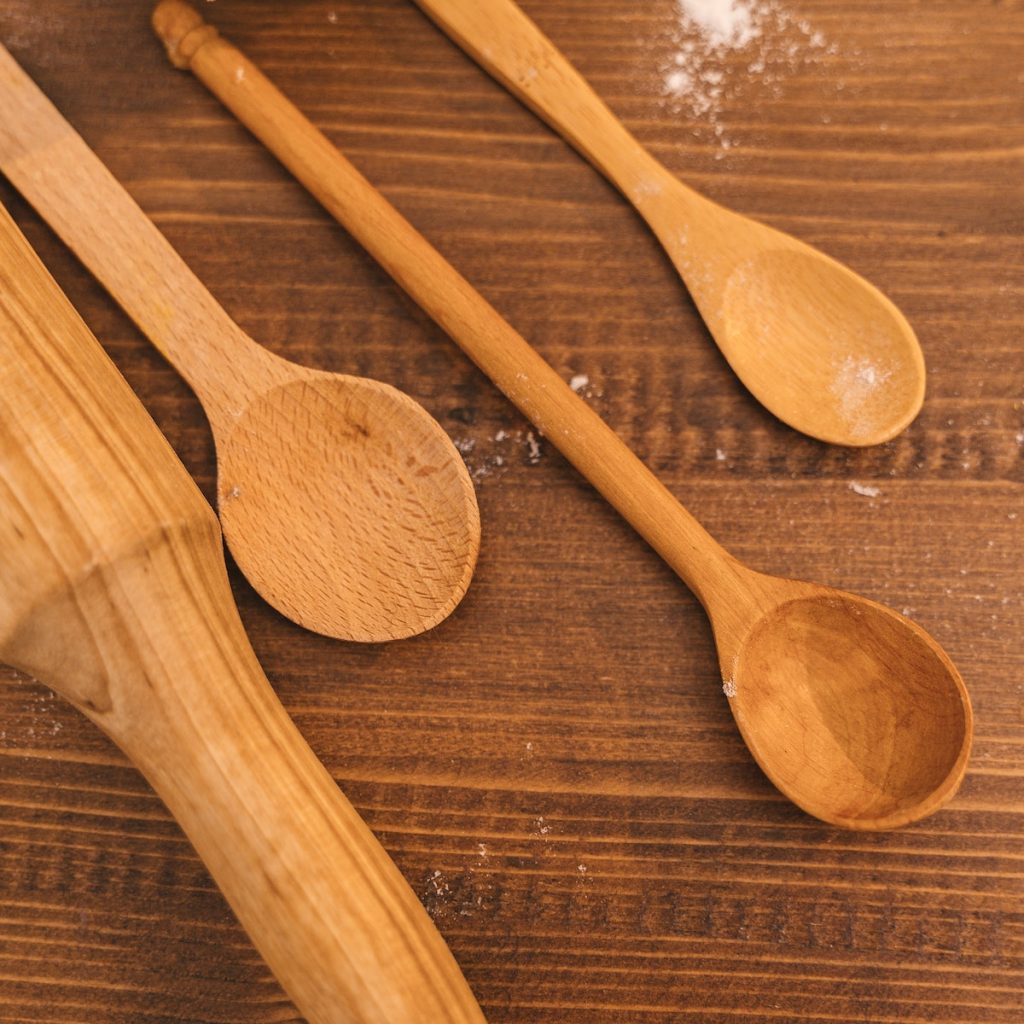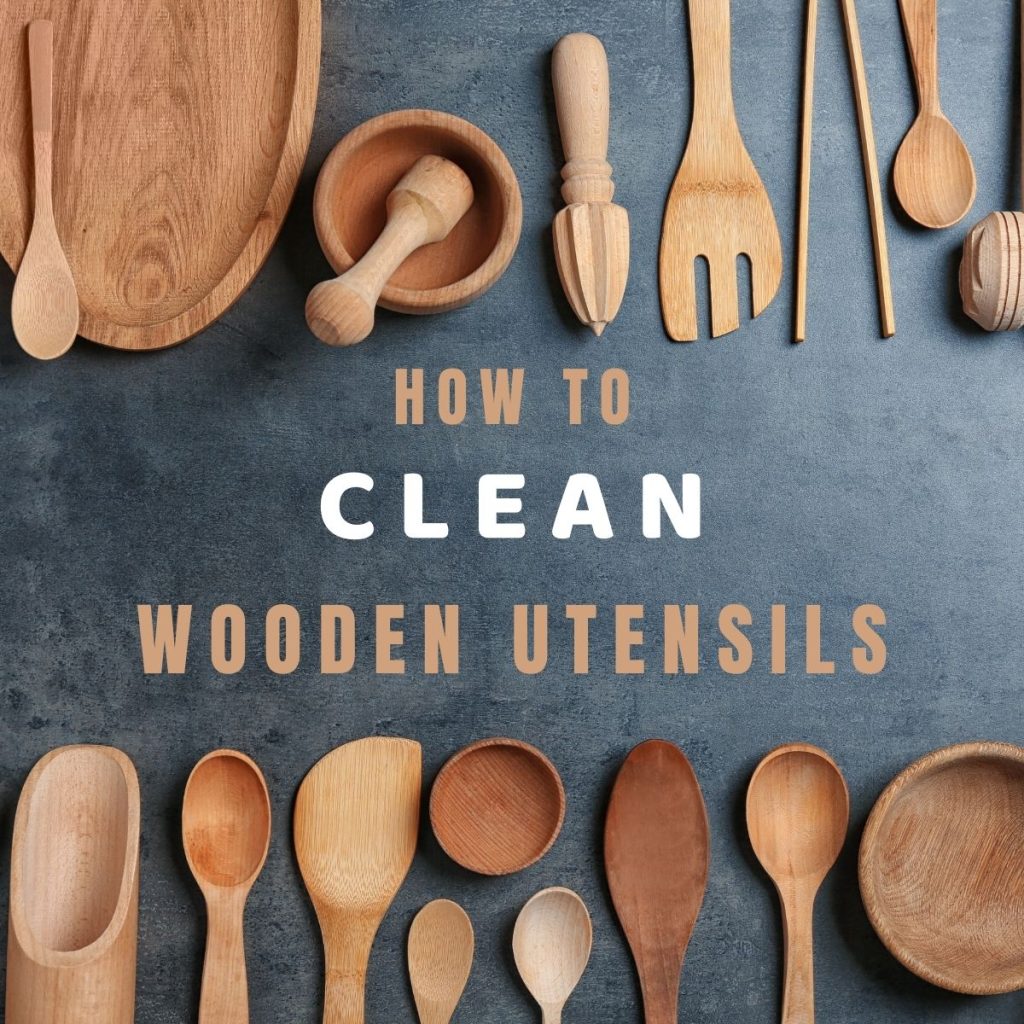Are your wooden utensils looking dull and dirty? Don’t worry, cleaning them is easier than you think! In this article, we’ll show you the step-by-step process of how to clean wooden utensils and maintain them properly.
With just a few simple supplies and some tender loving care, you can keep your utensils looking their best and ensure their longevity.
So, let’s get started to learn how to clean wooden utensils and give them the care they deserve!
Key Takeaways on How to Clean Wooden Utensils
- Mild dish soap and warm water are essential for cleaning wooden utensils.
- Use a sponge or cloth to scrub the utensils and remove dirt, grease, and bacteria.
- Avoid using metal tools as they can scratch the wood, and opt for wooden or plastic scrapers instead.
- After washing, make sure to thoroughly dry the utensils and apply oil or wax for protection and maintenance.
Gather Necessary Cleaning Supplies

To gather the necessary cleaning supplies for cleaning wooden utensils, gather a mild dish soap, a soft sponge or cloth, and warm water. These supplies are essential for effectively removing dirt, grease, and bacteria from your wooden utensils.
Start by filling a sink or basin with warm water and adding a few drops of the mild dish soap. The warm water helps to loosen any stuck-on food particles, while the dish soap helps to break down grease and sanitize the utensils.
Next, wet the soft sponge or cloth in the soapy water and gently scrub the wooden utensils, paying close attention to any areas with visible dirt or stains. Rinse the utensils under running water to remove any soap residue, and pat them dry with a clean towel.
Remember to store your wooden utensils in a dry place to avoid mold or mildew growth.
Remove Food Residues From Wooden Utensils

To remove food residues from your wooden utensils, use a gentle scraping tool. This will help you effectively get rid of any stuck-on food without damaging the wood. Here are three steps on how to clean wooden utensils:
- Start by gently scraping off any visible food residues using a wooden or plastic scraper. Avoid using metal tools as they can scratch the surface of the wood.
- Next, rinse the utensil with warm water to remove any remaining food particles. Be sure to use a gentle stream of water and avoid soaking the utensil for too long, as excessive moisture can cause the wood to warp or crack.
- If there are still stubborn residues, create a paste by mixing baking soda with water. Apply the paste to the affected areas and gently scrub with a brush or cloth. Rinse thoroughly and dry the utensil completely before storing.
Wash Wooden Utensils With Mild Soap and Water
To wash your wooden utensils with mild soap and water, gently scrub them using a soft brush or cloth.
First, fill your sink with warm water. Add a small amount of dish soap, ensuring that it isn’t too harsh or abrasive.
Submerge the utensils in the soapy water and allow them to soak for a few minutes. This will help unstick any stubborn food particles or residue.
Next, take the soft brush or cloth and gently scrub the utensils, paying attention to any crevices or hard-to-reach areas. Be sure to brush in gentle circular motions to avoid scratching or damaging the wood.
Once you have thoroughly scrubbed the utensils, rinse them under running water to take away any soap residue.
Finally, pat them dry with a clean towel and allow them to air dry completely before storing them.
Dry Wooden Utensils Thoroughly

Once you have rinsed your wooden utensils, it’s important to thoroughly dry them. Drying wooden utensils properly helps to prevent moisture from absorbing into the wood and causing damage.
Here are three key steps on how to clean wooden utensils and how to thoroughly keep them dry:
- Use a clean towel: After rinsing, gently pat the utensils dry with a clean, absorbent towel. Ensure that all surfaces, including the handle and any crevices, are completely dry.
- Air drying: Place the utensils in a well-ventilated area to air dry completely. Avoid stacking them or placing them in a closed container, as this can trap moisture and lead to mold or mildew growth.
- Stand them upright: To promote proper airflow and quick drying, stand the utensils upright in a utensil holder or a cup. This allows any remaining moisture to evaporate efficiently.
Apply Oil or Wax to Protect and Maintain Wooden Utensils
To protect and maintain your wooden utensils, apply oil or wax. This step is crucial in maintaining the longevity and quality of your wooden utensils. Applying oil or wax creates a protective barrier that helps prevent moisture from absorbing into the wood, which can cause it to distort or crack over time.
Additionally, oil or wax helps to replenish the natural oils in the wood, keeping it moisturized and preventing it from drying out and becoming brittle. When applying oil, choose a food-safe option such as mineral oil or coconut oil. Be sure to apply a thin, even layer and allow it to absorb into the wood for a few hours before wiping off any excess.
For wax, use a food-grade option like beeswax or a specialized utensil wax. Rub a small amount onto the wooden utensils, using a cloth or your hands, and then buff to a shine. Remember to reapply oil or wax as needed, especially after washing or if the wood starts to look dry.
There you have it. I hope this answers your question on how to clean wooden utensils.





Konnichiwa! (Hello!) I'm Pat Tokuyama, a Japanese tofu cookbook author, who travels for music, food, and adventure. If you like Japanese tea, checkout some of the newestorganic japanese tea, matcha bowls and noren and more!
** Curious about the Plant Based Japanese Cooking Club? ** Learn more here!